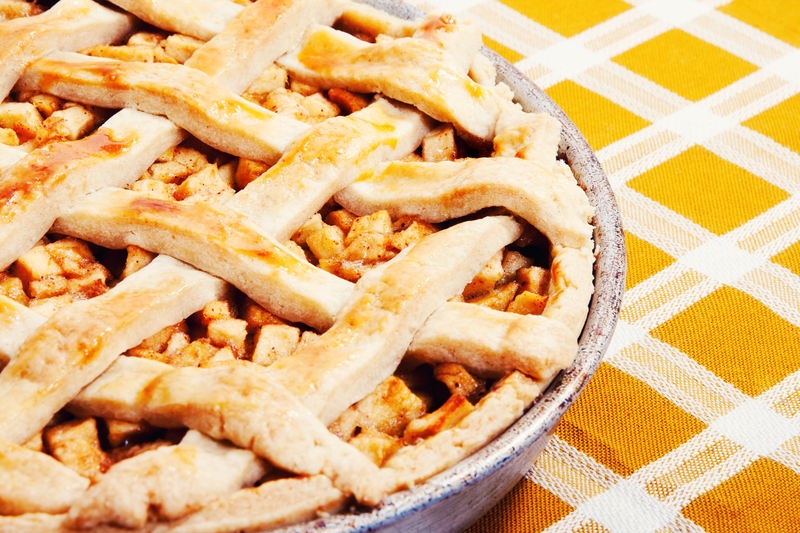 Apple pies are a beloved dessert, known for their sweet and comforting flavors.
Apple pies are a beloved dessert, known for their sweet and comforting flavors.
However, achieving the perfect apple pie can be a bit tricky.
One common challenge bakers face is excess moisture in the filling, which can lead to a soggy crust and a less-than-ideal pie.
In this article, we’ll explore various techniques and tips to help you get the moisture out of apples for apple pies that are both delicious and perfectly textured.
Choosing the Right Apples
The first step in ensuring a less watery apple pie is selecting the right type of apples.
Some apples naturally contain more moisture than others.
Here are some apple varieties that work well for pies:
- Granny Smith: These tart apples are excellent for pies as they have a firm texture and lower moisture content, which helps prevent a soggy crust.
- Honeycrisp: Honeycrisp apples offer a balanced sweet-tart flavor and hold their shape well when baked, making them a good choice for pies.
- Pink Lady: These apples also known as Cripps Pink, are a popular apple variety cherished for their crisp texture, sweet-tart flavor, and striking pinkish-red skin..
Proper Apple Preparation
 Once you’ve chosen the right apples, it’s essential to prepare them properly to remove excess moisture:
Once you’ve chosen the right apples, it’s essential to prepare them properly to remove excess moisture:
- Peel and Slice: Start by peeling the apples to remove any excess moisture from the skin. Slice the apples thinly and uniformly to ensure even cooking.
- Remove Seeds and Core: Be sure to remove the apple seeds and core, as these can contribute to excess moisture. You can use an apple corer or a paring knife.
- Add Lemon Juice: Toss the apple slices with a bit of lemon juice. The citric acid will not only enhance the flavor but also help prevent the apples from browning and releasing extra moisture.
Pre-Cooking the Apples
Pre-cooking the apples before filling the pie crust is an effective way to remove excess moisture and enhance the flavor:
- Stovetop Cooking: Place the sliced apples in a saucepan with a little sugar, cinnamon, and a pinch of salt. Cook them over medium heat until they release their juices and the liquid reduces. This step will concentrate the flavors and remove some moisture.
- Microwave Method: Alternatively, you can microwave the apple slices for a few minutes until they soften and release moisture. Drain the liquid before using the apples in your pie.
Draining and Thicking
To further reduce moisture in your pie filling, you can drain the cooked apples and thicken the liquid:
- Strain the Apples: Place the cooked apples in a strainer or a colander to drain any remaining liquid. Gently press them to remove as much juice as possible.
- Use a Thickener: To thicken the remaining liquid, you can add a tablespoon or two of cornstarch or tapioca starch. Mix well and let it sit for a few minutes until it thickens.
Assembling and Baking the Pie
 Now that you’ve prepared your apples with reduced moisture content, it’s time to assemble and bake your apple pie:
Now that you’ve prepared your apples with reduced moisture content, it’s time to assemble and bake your apple pie:
- Cool the Filling: Ensure that the apple filling has cooled down to at least room temperature before adding it to the pie crust. This prevents the pie crust from getting soggy prematurely.
- Ventilation: Make sure to create vents or slits in the top crust to allow steam to escape during baking. This helps prevent excess moisture from accumulating inside the pie.
- Baking Temperature and Time: Bake your pie at the recommended temperature and time specified in your recipe. This ensures that the crust cooks evenly, and the filling thickens properly.
Bottom Line – How to Get the Moisture Out of Apples for Perfect Apple Pies?
Getting the moisture out of apples for your apple pies is a crucial step in achieving the perfect pie with a flaky crust and delicious filling.
By choosing the right apples, properly preparing them, and taking measures to reduce excess moisture, you can enjoy a pie that’s both scrumptious and perfectly textured.
So, go ahead and put these tips to use, and prepare to impress your family and friends with your amazing homemade apple pie.


